Nara is in the south-central part of Japan’s main island Honshu, east of Osaka and south of Kyoto, so if you are visiting either of those cities you can add on a day trip to Nara. Capital of Japan’s Nara Prefecture, the city was once the ancient capital of Japan around 1,400 years ago. It’s not surprising that Nara is known for its history, temples and shrines and is loved by those seeking rich cultural heritage. Nara (then known as Heijo-kyo) was the capital of Japan for 74 years between 710 to 784 and had connections through the maritime Silk Road through Osaka, so, if you’re planning an Osaka itinerary, it makes sense to add a day trip to Nara too.
When planning a trip around Japan, most people may not think of adding Nara to their itinerary at first, however, a Nara day trip is definitely worth considering. Things to do in Nara include visiting temples, shrines, gardens and 1200 Shika deer that wander freely around Nara Park. There’s a mystical air around Nara and it’s a Japanese destination that is calming for the soul. Feed the deer, which are not only icons of Nara and a protected species but possibly messengers of the gods, and make a wish in a shrine.
Contents
- Nara, Japan
- Top Tours
- What you need to know about visiting Nara
- Things To Do In Nara
- 1- See The Deer At Nara Koen Park
- 2- Feel At Peace At Todai Ji Temple
- 3- Watch The Fire And Water Ceremony At Todai-Ji
- 4- Walk Up To Nigatsu-Do Hall
- 5- Appreciate Art At Nara National Museum
- 6- Experience Tradition At Kasuga Grand Shrine
- 7- Spend The Night In A Buddhist Temple
- 8- Get Inspired At The Neiraku Art Museum And The Adjoining Isui-en Garden
- 9- Visit One Of The Oldest Buddhist Temples – Kofuku Ji
- 10- Watch The Takigi Noh (a Dance Drama)
- 11- Wander Around Dorogawa Onsen At Night
- 12- Enjoy Japanese Culture At Asuka Village
- 13- Get Back To Nature In The Kasugayama Primeval Forest
- 14- Gaze At Cherry Blossom Trees And Nara From Mt Yoshino
- 15- Check Out An Old Temple – Horyu-Ji
- 16- Feel Like A Local In Naramachi District
- 17- Spend Time In The Japanese Countryside
- 18- Taste Kuzu Mochi
- 19- Try The Delicious Miwa Somen Noodles
- 20- Taste Local Sweet Treats
Nara, Japan
Top Tours
- From Osaka/Kyoto: Kyoto and Nara Bus Tour with Kinkakuji Ticket – take an enchanting day trip to Nara.
- Nara: Half-Day UNESCO Heritage and Local Culture Walking Tour – get an overview of this enchanting city.
- Nara Like a Local: Customised Guided Tour – design your own tour to suit your interests.
What you need to know about visiting Nara
In contrast to the frenetic pace of Japan’s megacities, Nara is a green and peaceful city on the edge of a sprawling park. Founded by China’s Tang Dynasty in the 700s, cultural influences from China, Central Asia and Persia form the foundation of the city’s status as a centre for Buddhism in Japan.
You can visit Nara as a day trip from either Osaka and Kyoto with multiple train options to get you there.
From Osaka, you can take the Kintetsu Nara Line departing from Kintetsu Namba Station and arriving at Kintetsu Nara Station. If you have a JR Pass, you can take the JR Kanjo-Yamatoji Lines departing from JR Osaka Station and arriving at JR Nara Station.
From Kyoto, you can take the Kintetsu Nara Line departing from Kintetsu Kyoto Station and arriving at Kintetsu Nara Station. If you’re a JR Pass holder, you can take the JR Nara Line departing from JR Kyoto Station and arriving at JR Nara Station – just make sure you get on the express!
Things To Do In Nara
1- See The Deer At Nara Koen Park
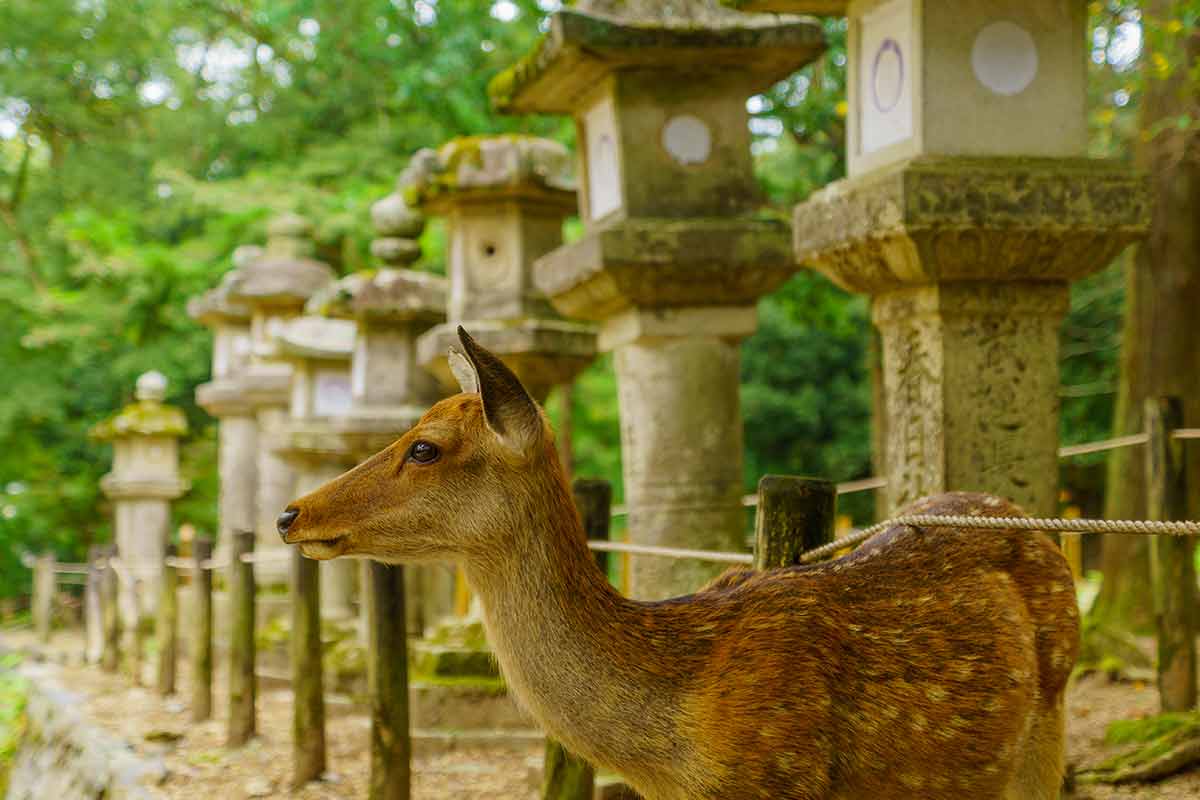
One of the most popular things to do in Nara is meet some of their four-legged furry friends – deer!
Usually just known as Nara Park, this area was established in 1880 and extends from downtown all the way to the base of the hills to the east of the city.
Nara Koen Park is home to three popular attractions: Todaiji Temple, Isui-en Garden and Kasuga-Taisha Shrine.
Aside from visiting these attractions the biggest draw is the deer.
There are hundreds of deer roaming free and they have become a symbol of Nara.
In Shinto (Japan’s native belief system) deer are sacred because they are believed to be messengers from the gods.
Though these are wild deer you can feed them by buying feed from stalls dotted around the park.
Be careful though they are wild animals after all no matter how friendly they might appear at first glance.
Need some luck? Here’s how to make a wish at a Nara shrine:
- put 5 yen in the altar box
- ring the bell to wake the gods
- bow twice
- clap your hands twice while thinking about your wish (make it very specific)
- bow once more
Nara Koen Park is at 469 Zōshichō, Nara-shi, Nara-ken 630-8211.
Recommended tour: Nara: Private Tour with a Private Guide
2- Feel At Peace At Todai Ji Temple
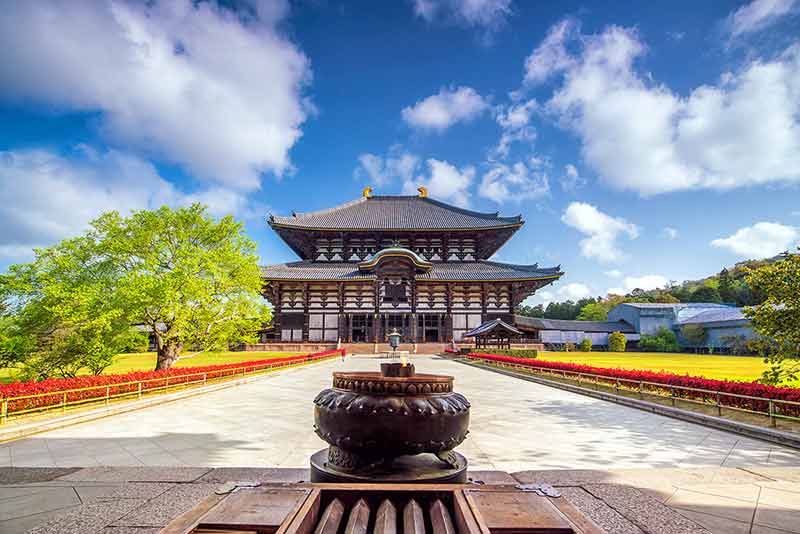
Within Nara Koen Park, Todai Ji Temple is historically significant and one of Nara’s most famous landmarks.
It was constructed in 752 and acted as the head temple to all the Buddhist temples in Japan.
Between 710 and 794 Nara was the capital of Japan.
This temple had such influence and power that the capital was moved to modern-day Kyoto so that the temple wouldn’t have too much influence on government affairs.
For a long time, the main hall of the temple, Daibutsuden (Big Buddha Hall) was the world’s largest wooden building.
Inside you will be able to see one of the country’s largest bronze statues of Buddha.
The 15 meter (49 ft) tall Buddha is impressive.
Todai Ji Temple is at 406-1 Zoshicho, Nara, 630-8587.
Recommended tour:
- Nara’s Historical Wonders: A Journey Through Time and Nature
- From Kyoto: Guided Day Trip to Kyoto and Nara with Lunch
3- Watch The Fire And Water Ceremony At Todai-Ji
Todai Ji Temple is also home to a fascinating and important ceremony, shuni-e.
Between the 1 March and 14 March, a ceremony known by its three names “Omizutori”, “Otaimatsu” and “Dattanbo Itadakase” draws crowds of people to Todai-Ji Temple.
The event used to be held during the second month of the year acccroding to Japan’s old lunar celdnar but now it’s been extended.
Otaimatsu refers to the part of the ceremony where torches are lit.
Young monks carry these huge flaming torches around the temple.
Omizutori refers to “drawing the sacred water”.
Dattanbo is the climax of the shuni-e ceremony when sacred water is drawn from Wakasa Well.
It is a fascinating way to see and observe an important part of Japanese culture.
Todai Ji Temple is at 406-1 Zoshicho, Nara, 630-8587.
4- Walk Up To Nigatsu-Do Hall
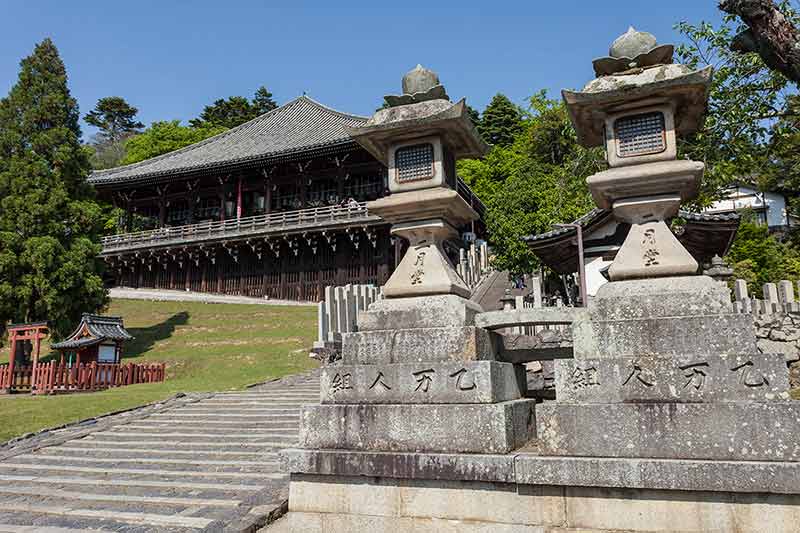
While Nigatsu-Do Hall is one of the structures of Todai-ji Temple, it is worth mentioning in its own right!
Nigatsu-Do is a temple east of Todai-ji Temple; it’s a smaller temple but also part of Todai-ji.
The hall isn’t the original building owing to a fire during a shuni-e service in 1667 but it has been immaculately restored.
This temple is on the hillside of Mount Wakakusa and you have to climb up wooden stairs to get there.
Try to head to Nigatsu-Do close to sunset as you can enjoy wonderful views of Nara and the lanterns that are lit when the sun goes down.
Nigatsu-Do Hall is at 406-1 Zoshicho, Nara, 630-8211.
5- Appreciate Art At Nara National Museum
The Nara National Museum focuses on Japanese Buddhist art.
The museum was established in 1889 and is still housed in the original building.
The museum’s interesting permanent collections include Buddhist statues, scrolls, ceremonial objects, paintings and a variety of other artifacts mainly from Japan.
Adjoined to the original building there is a new wing that is dedicated to the museum’s temporary exhibits.
If you visit during autumn each year, they hold a treasure of Todaiji Temple exhibit which is fascinating to head to before or after your visit to the temple.
Nara National Museum is at 50 Noboriojicho, Nara, 630-8212.
Recommended tour: Nara: Cultural Heritage Tour by Rickshaw
6- Experience Tradition At Kasuga Grand Shrine
When Nara became Japan’s capital in the 8th century a shrine was built at the foot of Misaka-yama (Japanese Maple) tree.
This shrine known as Kasuga Grand Shrine served to protect the city as it embarked on its role as capital.
In line with Shinto tradition this shrine was rebuilt every 20 years, and this was done until the 19th century.
Today this pristine temple is a wonderful place to walk around.
Twice a year the temple is lit with lanterns during the Mantoro Lantern Festival.
If you are interested in Buddhist and Japanese culture it is also well worth visiting at 9am which is when the morning prayer service is.
Kasuga Grand Shrine is at 160 Kasuganocho, Nara, 630-8212.
7- Spend The Night In A Buddhist Temple
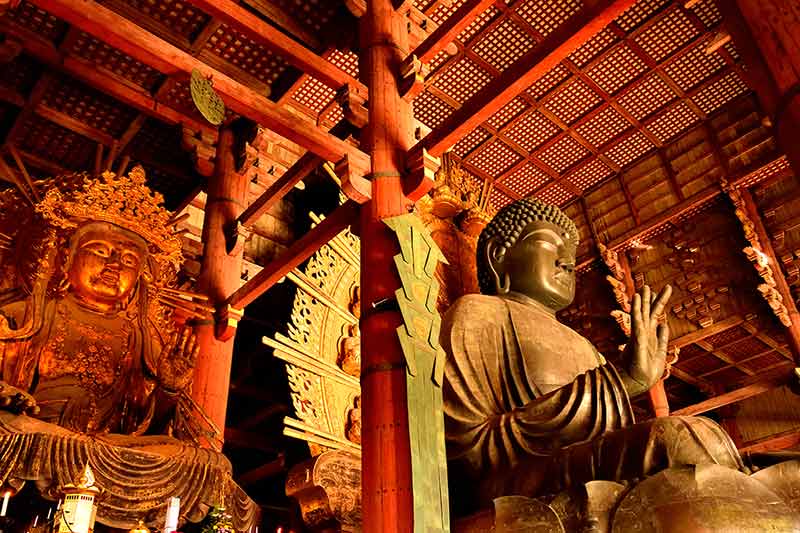
While booking your accommodation for your trip to Japan chances are you won’t have thought about spending the night in a Buddhist Temple.
Gyokuzoin is a Buddhist temple with more than 1,000 years of history.
The temple is in Quasi National Park at Mt. Shigisan is around 40km from Nara.
Guests can be believers or tourists looking to appreciate and understand Buddhist culture.
You can take night strolls through the temple, participate in the Goma prayer ritual, and partake in the asokukan (a type of meditation unique to Buddhism).
This is a highly unique experience and will leave you with many stories to tell.
Gyokuzoin Temple is at 2280 Shigisan, Heguri, Ikoma District, Nara 636-0923.
8- Get Inspired At The Neiraku Art Museum And The Adjoining Isui-en Garden
Art lovers will thoroughly enjoy going to the Neiraku Art Museum and the adjoining Isui-en Garden.
The garden is divided into two parts.
The first part was created in the 17th century reflecting the Japanese Edo Era.
The second part of the garden was added during the 20th century.
The landscape designers and architects involved in the garden used the “shakkei” method, which means “borrowed scenery”.
This is the principle of incorporating the landscape backgrounds into the garden’s composition.
This is a traditional part of east Asian garden design.
When you purchase your admission ticket it also includes a visit to the Neiraku Art Museum.
Strolling around the museum you can see many Chinese and Korean ceramic and bronze pieces.
The Neiraku Art Museum is at 74 Suimoncho, Nara, 630-8208.
9- Visit One Of The Oldest Buddhist Temples – Kofuku Ji
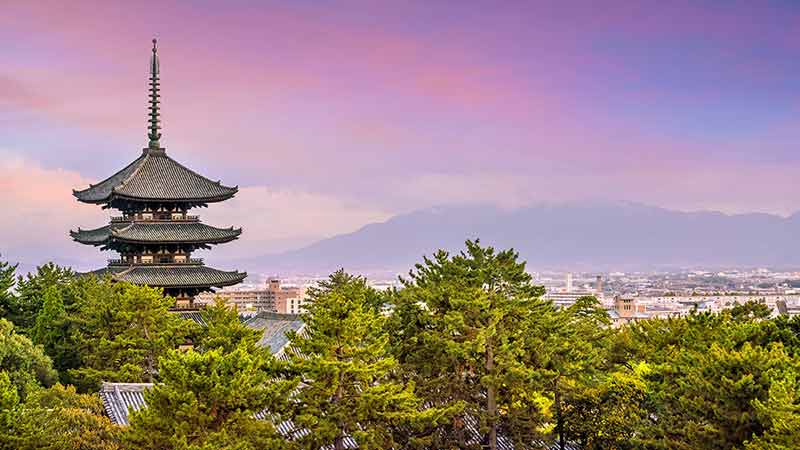
There are many elements that make up Kofuku Ji Temple.
There’s a five-story pagoda, a three-story pagoda, two octagonal halls and many statues.
This temple was built in 669 by the politically powerful Fujiwara family and has moved quite a bit!
It moved to Asuka when the capital was relocated then it moved back to Nara when it became capital.
The tallest pagoda stands at 50.1 meters (164 ft) and is the second tallest wooden pagoda in Japan, the first being in Kyoto.
As well as the temple being relocated the pagoda was rebuilt five times due to fire damage!
When visiting Nara, you simply have to tick off the must-see temples off your bucket list.
Kofuku Ji is at 48 Noboriojicho, Nara, 630-8213.
10- Watch The Takigi Noh (a Dance Drama)
Takigi Noh is a traditional event that takes place at Kofuku Ji Temple.
This is a unique event or theatre performance that combines Japanese culture and mystery.
The performers wear masks (or “noh” as they are known in Japan) of ghosts, children, and elderly people.
Despite having their faces covered the actors give bold performances through their elaborate body movements.
There are a series of performances with comic interludes known as kyogen.
You can catch a performance on the third Friday and Saturday of May every year.
Seats are limited so if you want one arrive early.
There’s also a standing room at the back of the venue.
Kofuku Ji Temple is at 48 Noboriojicho, Nara, 630-8213.
11- Wander Around Dorogawa Onsen At Night
Dorogawa Onsen is located a little outside of the main city of Nara close to the mountains.
Owing to the hot springs and proximity to the sacred Mt.
Omine, Dorogawa Onsen has become a scenic and fascinating place to visit.
The town is known for its mild hot springs which are around 26 degrees °C (78 °F).
The picturesque town is lined with restaurants, inns, and souvenir shops.
When visiting be sure to stay overnight so you can admire the flickering lanterns that line the streets.
You can get to Dorogawa Onsen easily from Kyoto, Osaka, and Nara.
From Nara you must take the train with two changes (Yamato-Saidaiji and Kashihara-jingu-mae).
Or you can take a bus which takes just an hour.
Dorogawa Onsen is at Dorogawa, Tenkawa, Yoshino District, Nara 638-0431.
12- Enjoy Japanese Culture At Asuka Village
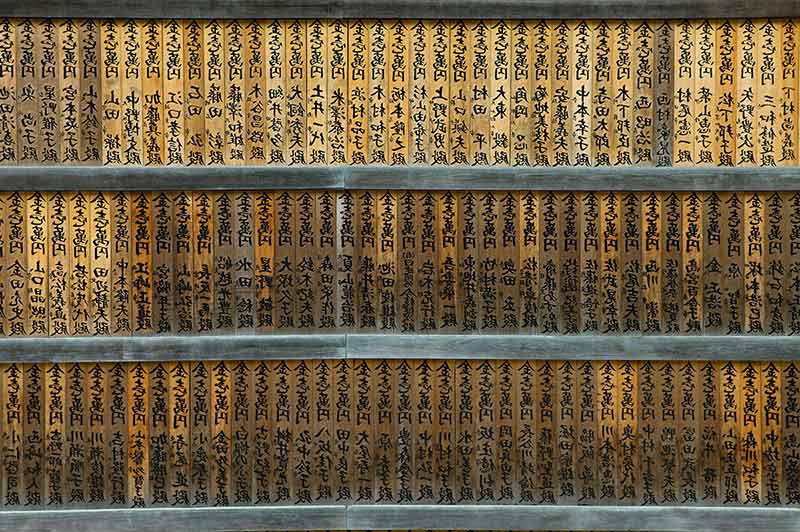
Head to Takaichi District in Nara and you will find the quaint village of Asuka.
Asuka is at the center of Nara Prefecture and only 25km from Nara.
Asuka is of valuable historical and architectural importance.
Asuka might be a village, but it was also the first capital of Japan.
As the first capital its documented history dates back a long way.
The period of Japanese history between 538 and 710 is named after the village.
As such there are several Buddhist temples and archeological sites that showcase the first few centuries of Japanese history.
The mountain landscape and rice fields are in themselves reason enough to visit Asuka.
However, seeing the ancient burial mounds, first temples, shrines and tombs is another big draw of visiting Asuka.
Visit Ishibutai tomb, one of the most important in Asuka history and be sure to head to the Temple of Asukadera.
Asuka Village is in Takaichi District, Nara.
13- Get Back To Nature In The Kasugayama Primeval Forest
The Kasugayama Primeval Forest nicknamed the “Forest of the Gods” is another excellent thing to do in Nara.
This forest is behind the Kasugataisha Shrine and covers an area of around half a kilometer.
This rare ecosystem has been well protected by authorities, with logging and hunting having been prohibited since AD 841.
The forest is home to more than 175 types of trees, rare birds and wild animals.
If you are looking to spend some time in nature this is the place to go in Nara.
There are hiking trails that pass by waterfalls and caves.
You can also climb Mt Wakakusa for excellent views of the city.
If you are renting a car while in Japan, consider driving along the Nara Okuyama Driveway which snakes around the mountain, offering beautiful views.
Kasugayama Primeval Forest is at Kasuganocho, Nara, 630-8212.
14- Gaze At Cherry Blossom Trees And Nara From Mt Yoshino
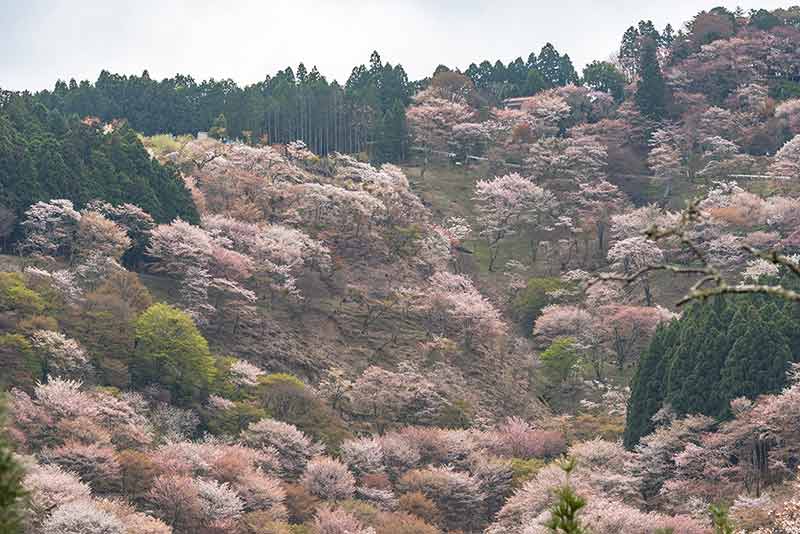
Mt Yoshino is in the town of Yoshino in Nara Prefecture.
This mountain and the surrounding area are well known for their cherry blossom trees.
There are believed to be around 30,000 cherry trees on the mountain, turning the scenery a beautiful shade of pink between late March and early April.
You can head to Mt Yoshino early and spend the day in the surrounding area.
From Nara the express train takes around 90 minutes.
Mount Yoshino is at Yoshinoyama, Yoshino, Yoshino District, Nara 639-3115.
15- Check Out An Old Temple – Horyu-Ji
Another of Nara’s must visit temples is Horyu-Ji founded by Prince Shotoku in 607.
The prince was also creditied with the early promotion of Buddhism in Japan.
This is another of the country’s oldest temples and it is home to one of the oldest surviving wooden structures in the world.
It was also afforded World Heritage recognition in 1993.
The main hall, five story pagoda and the central gate were built during the Asuka Perido (538-710) but have somehow not undergone any destruction, though have received renovations over the centuries.
Flanking the central gate are two of Japan’s oldest statues of Kongo Rikishi (a guardian of Buddhism).
Horyu-Ji Temple is at 1-1 Horyuji Sannai, Ikaruga, Ikoma District, Nara 636-0115.
16- Feel Like A Local In Naramachi District
Naramachi District is the former merchant district of Nara.
In this district you can get a real feel of ordinary life in Japan.
Many of the traditional warehouses and residential buildings have been well preserved and are open to the public.
You can just wander along the streets, pop into boutiques, cafes, shops, and restaurants.
There are a few small museums along the charming, narrow lanes.
17- Spend Time In The Japanese Countryside
With cities like Tokyo drawing so much tourist attention, you may not consider seeing rural Japan.
Nara Prefecture is the perfect place to experience real, authentic rural Japan.
The Nara countryside offers a slower pace of life with a low environmental impact.
Asuka Grape Farm is an excellent spot to visit to feel the peace of the countryside while learning about Asuka Village’s history.
From late winter to mid-autumn, you can pick your own fruit.
There is also an excellent farmers market in the village called Asuka Yume Farmers Market.
- Asuka Grape Farm is at 1424 Hirata, Asuka, Takaichi District, Nara 634-0144.
- Asuka Yume Farmers Market is at 2-1 Misono, Asuka, Takaichi District, Nara 634-0131.
18- Taste Kuzu Mochi
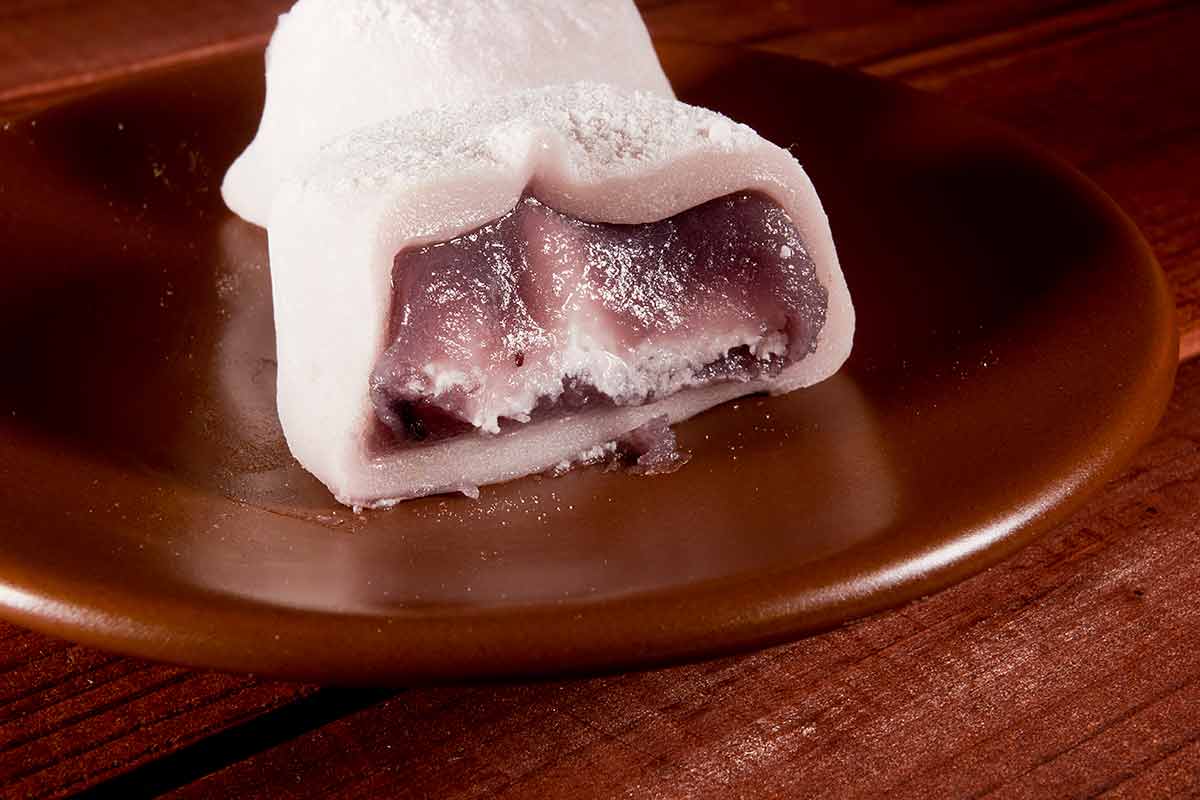
Kuzi mochi are sticky “mochi” cakes that are made with sugar, water and kudzu powder.
It is covered with a sweetened bean paste and often dusted with soybean flour.
Its translucent appearance looks really refreshing so it’s a wonderful dessert for summertime.
Shops like Nakatanidou are popular, with people crowding around to watch kuzu mochi being made using the traditional wooden hammer to pound the rice.
This sweet desert is widely enjoyed throughout Nara Prefecture.
19- Try The Delicious Miwa Somen Noodles
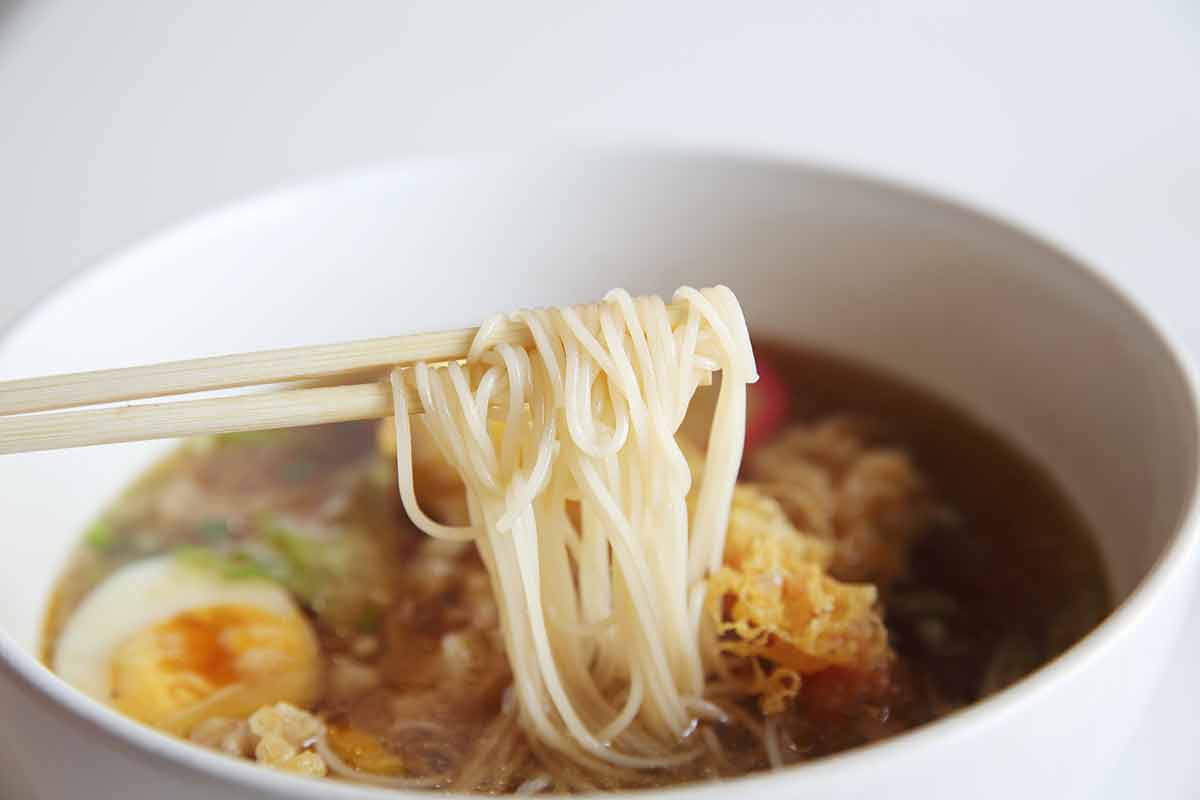
The water around Nara is some of the purest in the country.
Many people even hike Mount Miwa simply to drink the pure water as its pretty well known in Japan.
This water is combined with flour and salt to make the special miwa somen noodles.
They are super thin and have a delicate flavour.
They are usually eaten with soy sauce, seaweed, ginger, broth and sake.
As Nara is close by to Mount Miwa, it’s an excellent place to try some of these famous noodles.
20- Taste Local Sweet Treats
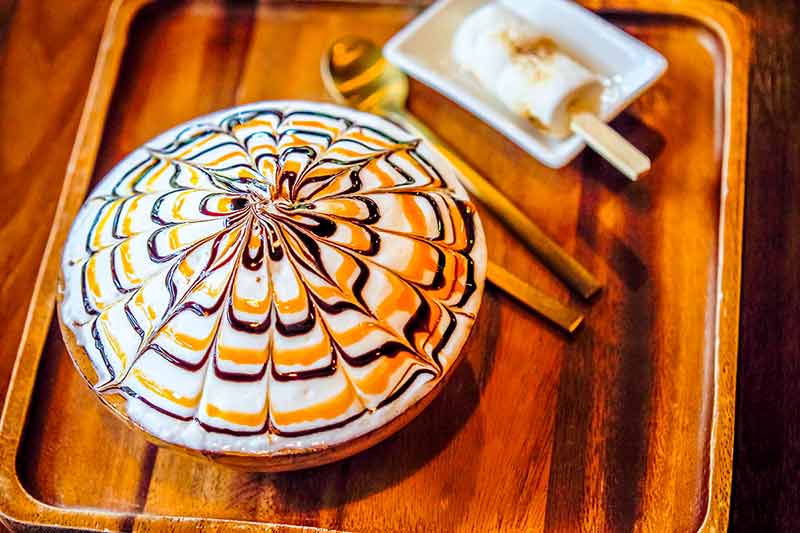
Nara is known for its sweet treats so it’s a great place to try some Japanese desserts.
Japanese desserts are completely unique and very different to western desserts, so it makes for an interesting culinary experience.
The traditional sweet treat, satsuma-yaki, is a Japanese sweet potato with a bean paste centre wrapped in batter.
It is then grilled on bamboo skewers until golden brown and is perfect with a cup of tea.
For an autumnal treat try kaki, a regional fruit with a honey-like sweet and rich taste.
You eat them as they are or in jelly and jam form.
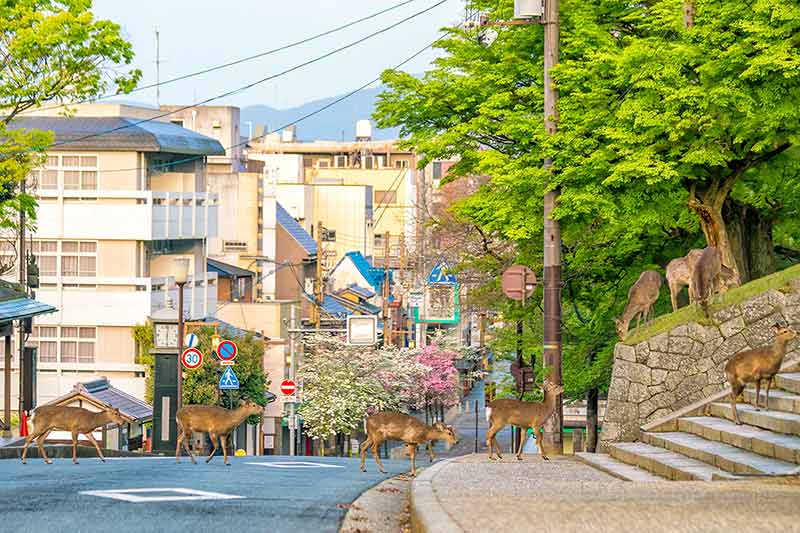
For more about Japan, read:
- 20 Incredible Landmarks in Japan
- 20 Best Beaches In Japan
- 25 Things To Do In Tokyo At Night
- 25 Landmarks In Tokyo
- A Guide To Winter In Japan
- 50 Things To Do In Japan
- Japan Itinerary (10 days)
- Where To Stay In Tokyo
- Osaka Itinerary
- Nagoya Itinerary
- Where To Stay In Nagoya
- 12 Things To Do in Takayama
- How To Use The Toilets In Japan
- Osaka Itinerary
- 20 Things To Do In Osaka At Night
- Where To Stay In Osaka
- 20 Things To Do In Hiroshima
- Where To Stay In Hiroshima
- 20 Things To Do In Yokohama
- 15 Things Japan Is Famous For
- 20 Things To Do In Kamakura
- 20 Things To Do In Nagano
- 20 Day Trips From Tokyo
- 3 Day Trips From Osaka
- The Most Beautiful Japan Tourist Spots
- Hakuba Hotels
- Hakuba Ski Resort
- Japanese Onsen Tips
- Where To Stay In Kyoto Like A Local
- Arashiyama Monkey Park
- Eating and Drinking Matcha
- Amanemu Review
- 20 Japanese Drinks
- 20 Things To Do In Kyoto At Night
- 20 Japanese Cities
- 20 Things To Do In Fukuoka
- Where To Stay In Fukuoka
- 20 Things To Do In Nara
- 20 Things To Do In Hakone
- 20 Things To Do In Sapporo
- Where To Stay In Sapporo
- 20 Things To Do In Kanazawa
- 20 Things To Do In Okinawa
- 20 Things To Do In Sendai
- 20 Things To Do In Saitama
Plan Your Trip

Rent A Car – Find the best car rental rates at Discover Cars. They compare car hire companies to provide you with the best deal right now.

Find A Hotel – If you’re curious about this article and are looking for somewhere to stay, take a look at these amazing hotels.